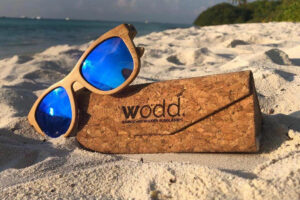STARTUP WODD PH uses bamboo to make sunglasses in line with Quezon City’s push to cut plastic waste.
It also helps Filipino farmers in Cebu and Davao, where it gets the raw materials to make wood and bamboo-oriented consumer and fashion products.
“The more you use local farmers, the more you’re giving them opportunities,” Stephene Roy C. Condino, group executive vice-president at MASA Group of Companies, the parent of Wodd PH, told BusinessWorld in an interview.
The “poor man’s timber” is a versatile material used in products like furniture, paper, musical instruments, accessories, and food.
In the Philippines, there are about 50,000 hectares of bamboo forests, according to the Department of Environment and Natural Resources.
Despite the demand for bamboo in the Philippines, it is still considered an untapped potential, according to the Department of Trade and Industry.
To maximize the produce from five to 10 local farmers, a strand of bamboo creates about two to three pieces of eyewear that costs P4,000 each and takes two days to make.
“If there is a demand to produce more, you will need to have more farmers,” Mr. Condino said.
He said it is difficult to market sustainable products in the Philippines because people think they are expensive.
“Eventually, no one believes in what you do as a sustainable company because they are not used to it,” he said. “We have to inform everyone that it’s not always cost-driven.”
Committed to promoting sustainability, the environmental startup has pledged to plant a tree for every eyewear it sells.
As many as 3,000 tree seedlings had been planted in Samar, Davao del Sur, Bicol and Rizal as of October as part of this environmental commitment.
“We have to ensure that we take good care of these seedlings,” Mr. Condino said. “When we plant them, they will grow for three years and not just for a short time.”
He added that customers should be aware of the sustainability work done by businesses that sell eco-friendly products and services.
“We need to see action. We need to see results coming from what we’re trying to portray to customers,” he added. — Almira Louise S. Martinez

